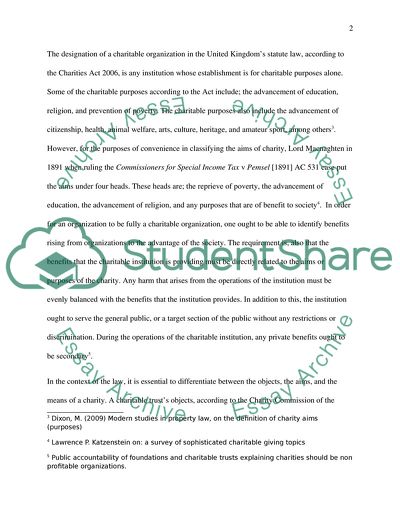Cite this document
(“Effect of the Charities Act 2006 Essay Example | Topics and Well Written Essays - 1500 words”, n.d.)
Retrieved from https://studentshare.org/law/1619129-critically-examine-the-effect-of-the-charities-act-2006-on-the-definition-of-charitable-aims
Retrieved from https://studentshare.org/law/1619129-critically-examine-the-effect-of-the-charities-act-2006-on-the-definition-of-charitable-aims
(Effect of the Charities Act 2006 Essay Example | Topics and Well Written Essays - 1500 Words)
https://studentshare.org/law/1619129-critically-examine-the-effect-of-the-charities-act-2006-on-the-definition-of-charitable-aims.
https://studentshare.org/law/1619129-critically-examine-the-effect-of-the-charities-act-2006-on-the-definition-of-charitable-aims.
“Effect of the Charities Act 2006 Essay Example | Topics and Well Written Essays - 1500 Words”, n.d. https://studentshare.org/law/1619129-critically-examine-the-effect-of-the-charities-act-2006-on-the-definition-of-charitable-aims.


